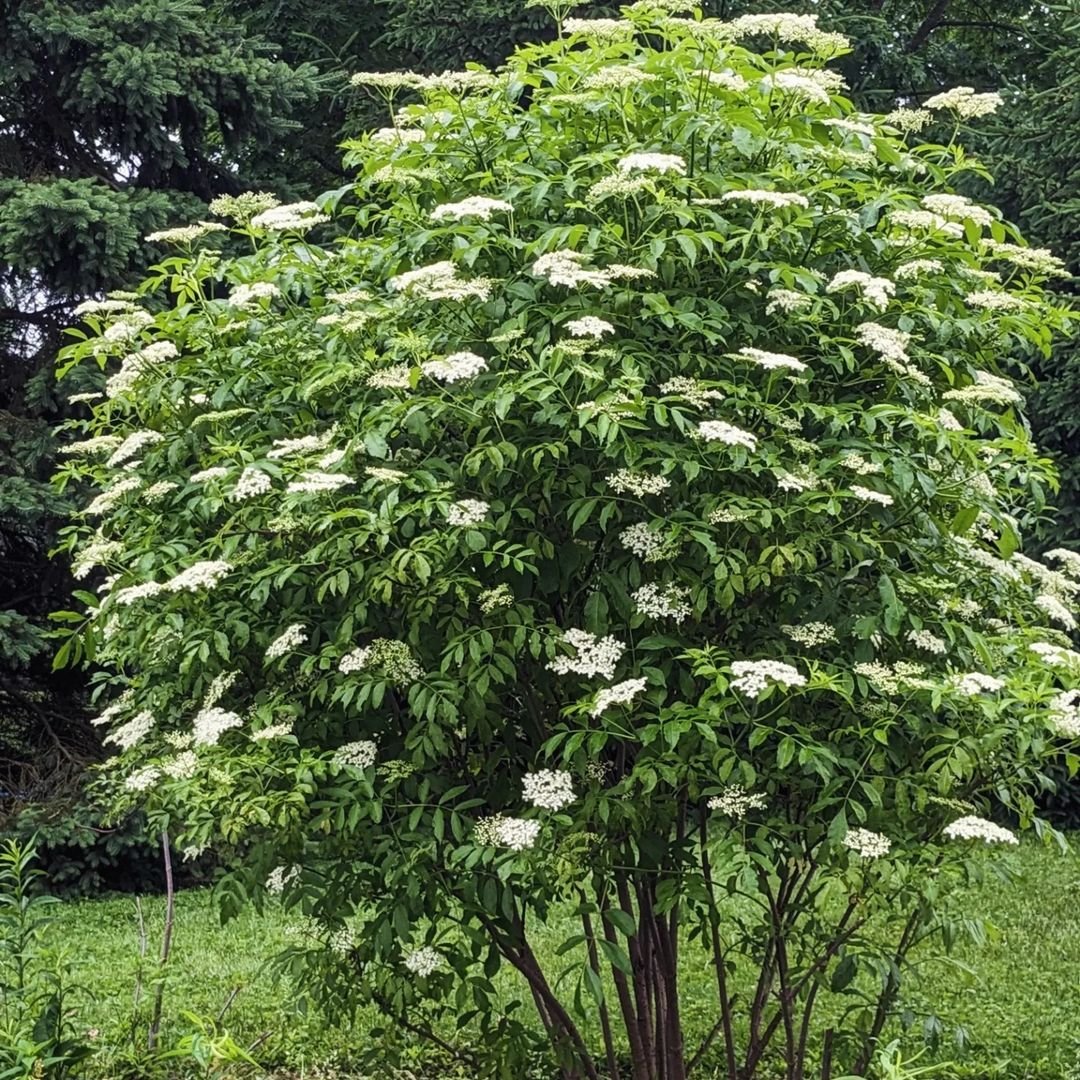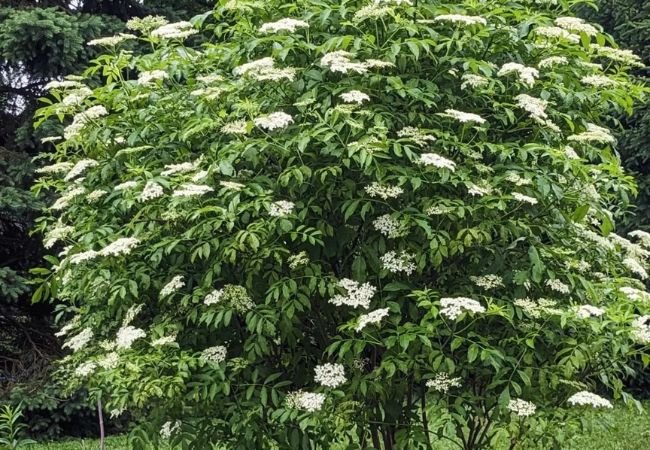Discover how to grow and care for elderberry bushes. Learn about planting, maintenance and harvesting to make the most of these productive and versatile plants.
Elderberry bushes are a fantastic addition to any garden. These hardy plants not only produce delicious berries but also have a rich history in traditional medicine. In this guide, we’ll walk you through everything you need to know about growing and caring for elderberry bushes.
Here is a chart with detailed information on Elderberry bushes:
| Category | Information |
|---|---|
| Botanical Name | Sambucus nigra, Sambucus canadensis |
| Common Name | Elderberry |
| Plant Type | Deciduous Shrub |
| Hardiness Zone | 3-9 |
| Sun Exposure | Full Sun to Partial Shade |
| Soil Type | Well-drained, Moist, Loamy |
| Watering | Regular, Keep Soil Moist |
| Growth Habit | Multi-stemmed, Spreading |
| Height/Spread | 6-12 feet tall / 6-12 feet wide |
| Special Features | Edible Berries (When Cooked), Attracts Pollinators, High in Antioxidants, Used in Herbal Medicine, Tolerates Wet Soil |
What Are Elderberry Bushes?

Elderberry bushes (Sambucus) are deciduous shrubs native to many parts of the world. They’re known for their clusters of small, dark berries and delicate white flowers. Elderberries have been used for centuries in food, drinks, and folk remedies.
Popular Elderberry Varieties
- American elderberry (Sambucus canadensis)
- European elderberry (Sambucus nigra)
- Black elderberry (Sambucus nigra ssp. canadensis)
Planting Elderberry Bushes
When to Plant
The best time to plant elderberry bushes is in early spring or fall when the plants are dormant.
Choosing the Right Location
Elderberries prefer:
- Full sun to partial shade
- Well-draining soil
- Slightly acidic soil (pH 5.5-6.5)
- Protection from strong winds
How to Plant
- Dig a hole twice the size of the root ball
- Mix compost into the soil
- Place the plant at the same depth it was in its container
- Water thoroughly after planting
Caring for Elderberry Bushes
Watering
Elderberries need consistent moisture, especially during fruit development. Water deeply once a week, or more often in hot, dry weather.
Fertilizing
Apply a balanced, organic fertilizer in early spring before new growth begins.
Pruning
Prune in late winter or early spring before new growth starts:
- Remove dead, damaged, or crossing branches
- Thin out older stems to promote new growth
- Cut back the tips of branches to encourage bushiness
Mulching
Apply a 2-3 inch layer of organic mulch around the base of the plant to retain moisture and suppress weeds.
Pest and Disease Management
Common Pests
- Elderberry borer
- Japanese beetles
- Birds (they love the berries too!)
Diseases to Watch For
- Verticillium wilt
- Powdery mildew
- Leaf spot
Use organic pest control methods when possible to protect beneficial insects.
Harvesting Elderberries
When to Harvest
Berries are typically ready for harvest in late summer to early fall when they’re dark purple or black.
How to Harvest
- Cut entire clusters of berries
- Remove berries from stems (they’re easier to remove when frozen)
- Rinse berries thoroughly before use
Using Your Elderberry Harvest
Elderberries are versatile and can be used in many ways:
- Elderberry syrup for immune support
- Jams and jellies
- Pies and other baked goods
- Wine and cordials
Remember, raw elderberries can cause stomach upset. Always cook them before eating.
Companion Planting with Elderberries
Elderberries grow well with:
- Currants
- Gooseberries
- Raspberries
- Blackberries
These plants have similar growing requirements and can create a diverse berry patch.
Winter Care for Elderberry Bushes
In colder regions:
- Apply a thick layer of mulch around the base
- Wrap young plants in burlap for protection
- Prune in late winter to remove any winter-damaged branches
Propagating Elderberry Bushes
You can easily propagate elderberries through:
- Hardwood cuttings in winter
- Softwood cuttings in summer
- Division of root suckers in spring
Common Problems and Solutions
Problem: Yellow Leaves
Solution: Check soil pH and drainage. Adjust as needed.
Problem: No Fruit Production
Solution: Ensure proper pollination by planting multiple varieties.
Problem: Weak Growth
Solution: Check sunlight exposure and increase if necessary.
Growing elderberry bushes can be a rewarding experience. With proper care, these versatile plants will provide you with bountiful harvests for years to come. Whether you’re interested in their culinary uses or potential health benefits, elderberries are a valuable addition to any garden.
Remember to always consult with local gardening experts or extension offices for advice specific to your region. Happy gardening!
For more gardening tips and plant care guides, visit usagardenhub.com


1 thought on “Elderberry Bushes : Growing and Caring for These Productive Plants”